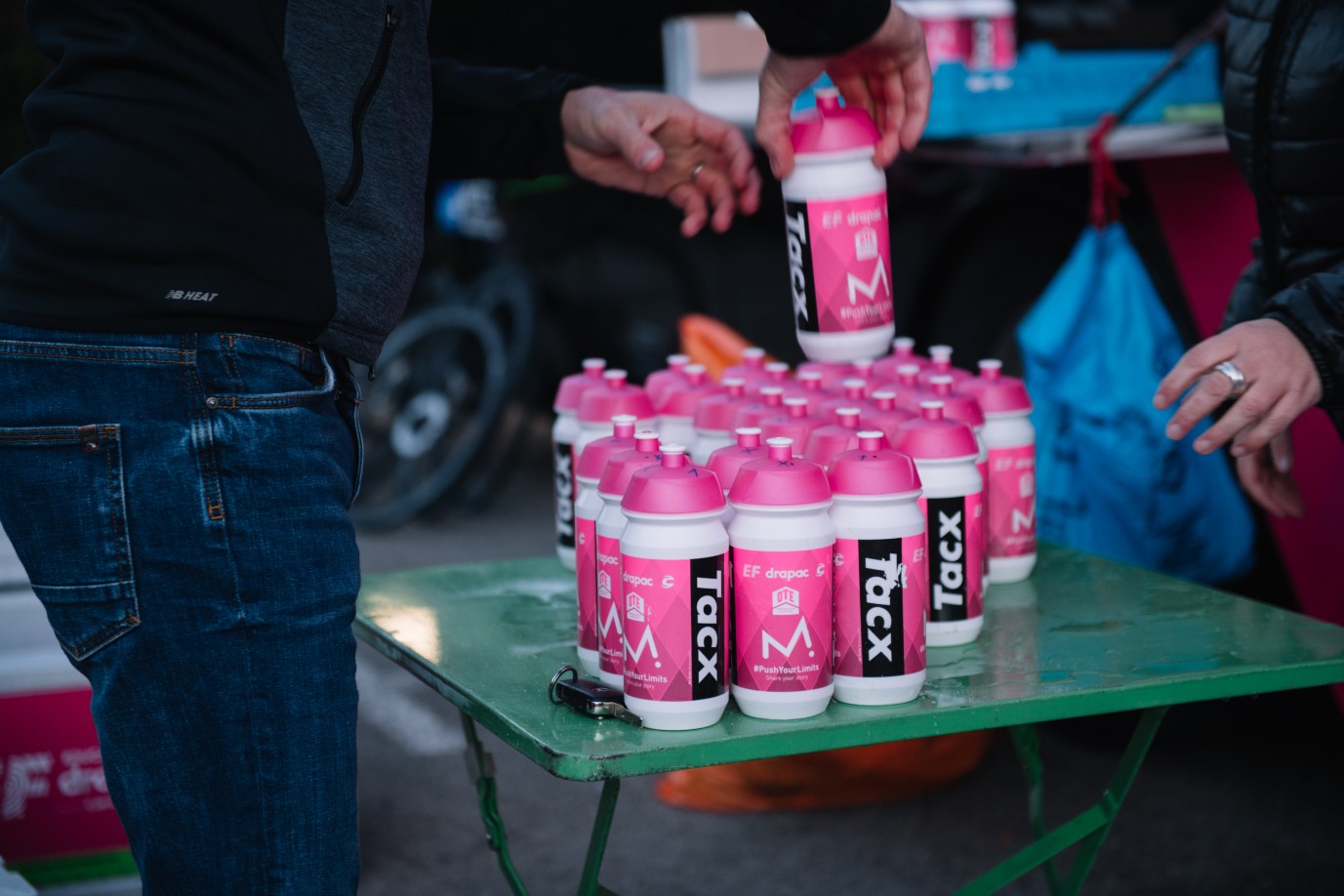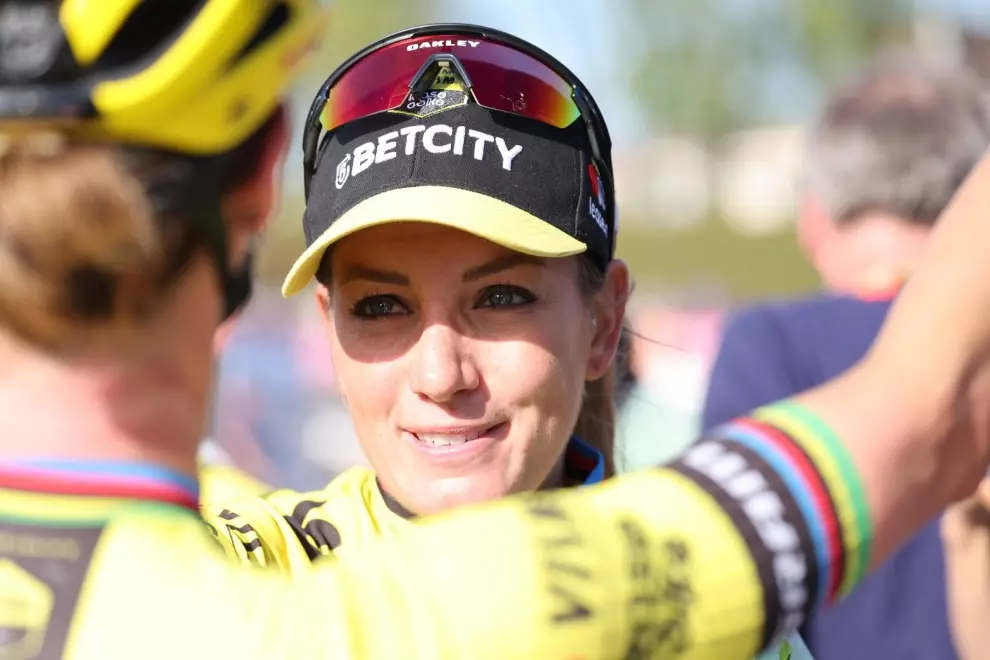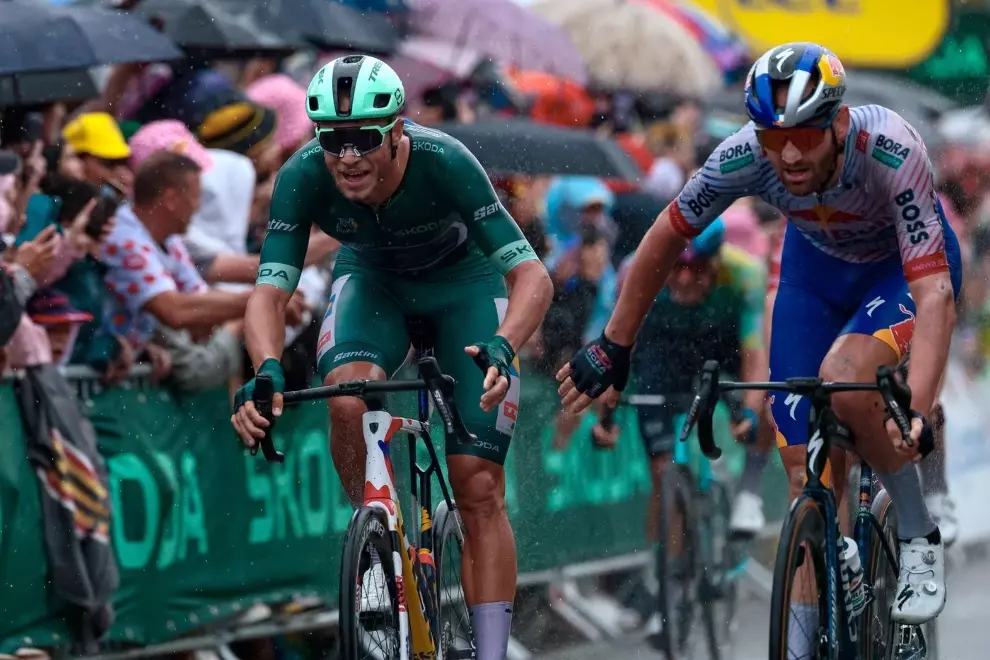Kevin, could you please tell us a little about your professional beginnings and how did you start working in sports medicine?
As an undergrad at a university, I studied Health & Exercises Sciences, which is the USA equivalent for ‘Sports Sciences’ in Europe. Following that, I went to a medical school followed by an extra board certification in Emergency Medicine with a sub-specialisation in Training in Sports Medicine.
While I was studying Sports Medicine, I also started working with Slipstream Sports, which is the organization that owns the different iterations of our team at various levels in cycling, including EF-Drapac, but not only. I initially started with their Under-23 Development team, which was then called “Chipotle”. I did that for a year and I migrated to their Word Tour team in 2011. It is now my 3rd year as the Head of Medicine for EF-Drapac p/b Cannondale.

In addition, I do have a private practice here in Tennessee called ‘Podium Sport Medicine’.
Lastly, I still do work occasionally at the emergency department at the university hospital here in town. I do that because, personally, I feel that it is important to work outside of cycling as it keeps all of my skills sharp. You know, working in cycling is very focused and with specific athletes so I feel that I do need the extra knowledge I guess. (smiling)
How is your work with the riders during this time of the year? Does it differ from the main cycling season?
The work with our athletes is very different during the off-season. There are still the same cases happening that we see during the cycling season such as when an athlete gets sick or injured. We are still handling those problems but there is a bit of a shift from ensuring their health during the training season whereas in the off-season the focus is to get everyone ready for the next season.
In practice, during the off-season, it is more about health maintenance for our athletes and it can be such little things as making sure that they see the dentist or making sure that their vaccinations are up to date. Things that may be difficult to manage during the cycling season.
Basically, it is to make sure that all riders are ready for the big training camps coming in January and February, both in terms of the regulatory standpoint with the UCI and health maintenance checks. Because you must remember that there are also a lot of regulations to be met with the UCI such as cardiac tests and blood tests, which we arrange with clinics close to where our riders live around the world.

In the past, we tried to do many of these tests at the training camps in January and February, but it turned out to be using too much time from our riders so we realized that it is much easier to plan these in the off-season with other centres around the world. My job is then to review these results and act accordingly.
With 30 riders, the logistics of it all can be difficult but that’s cycling. In many other sports like baseball, football or basketball, there is a training centre and the athletes are expected to move to that city when they sign with the team. In cycling, that does not happen because the athletes live in various places around the world so the logistics are difficult year-round.
The main medical and nutritional aspects of pro cycling
Nutrition has become the centrepiece of pro cycling given the fact that it is a sport where athletes are spending an incredible amount of energy during races and put their bodies through a massive amount of stress for weeks at a time. This is especially true during a 3-week Grand Tour.
As the Head of Medicine at EF-Drapac p/b Cannondale, could you tell us how is your work connected with the nutrition staff?
First of all, I will say that you are right – nutrition has taken a much bigger role in how we work with athletes from both the performance and health standpoint. In my opinion, nutrition is now more powerful than medicine, both for athletes and normal people in terms of remaining healthy.
As we’ve recognized this within our team (as well as other teams have), we’ve added a head dietitian, Mr Nigel Mitchell, based in the UK. We also have a couple of chefs who travel with us as well during the races.
As the Head of Medicine, I will add that nutrition includes meals but also the nutritional supplements and tools, whether it may be the vitamins or gels or hydration mix that we use. All of this is important.

Now, as far as my interactions with the nutrition team are concerned, these are pretty seamless as Nigel and I speak rather often relating to each athlete.
Our talk often involves data such as the athlete’s bloodwork, which the UCI requires us to do to check on the health of the riders. So, for example, if we see that a rider is low on iron or vitamin D, then I will work with the nutrition staff to make sure that this is taken care of promptly.
I must say that we are probably not as strict as some other World Tour Teams which are reportedly a lot stricter in terms of weighing the food and counting the calories for their riders.
The reason we feel different is that, in my opinion (and others within our team), this emphasis on nutritional intakes may be well-intended but often misguided. There is simply no great evidence that counting calories at the granular level is all that helpful. Besides, I think that it often prevents athletes from focusing on more important things. Such things are emotionally draining for the athletes and everyone around them.
Then again, this approach may work very well for other teams and their riders. It is a question of the team’s culture, I think. There is not always the ‘right’ or ‘wrong’ here, it is just what we find is working for us at EF-Drapac p/b Cannondale.
On occasion, however, we will intervene more closely in the case of an athlete with a specific issue where food may be a problem. In such a case, we will come up with a specific diet. For example, an athlete with food intolerance such as lactose or gluten. This usually happens more when they are at home in the off-season because they do not always follow strict diets. In such a case, we will provide them with some tricks and recipes for a more suited diet.

Now, another way you will see that is if a rider has specific goals with his training. Then his diet will be fully tailored to support these goals. For example, a rider in a base training where he is doing long and slow kilometres vs. a rider training for the sprints in a Grand Tour will be very different; aerobic vs. glycolytic, essentially.
So, working with the nutrition staff will help match their food intake to their expected training output.
Cycling is a sport that is very different from most disciplines because of the sheer physical demands required for a 3-week Grand Tour. From past interviews with pro cyclists, we understand that in a Grand Tour, like the Giro, the Tour de France or La Vuelta, a rider can be good one day and be totally off the next due to nutrition fails or other physical symptoms. How does that happen?
It is true that the demands for a 3-week Grand Tour are pretty unique when compared to other professional sports. And having one bad day can be very detrimental to the athlete’s overall standings. But, at the same time, it is very difficult to get 21 good days in a Grand Tour so yes, nutrition is a cornerstone at attempting to put together a full Grand Tour that goes well.
So, when a rider is not doing well, nutrition is something we look at pretty quickly but it could be other things that could be going wrong also medically.
For example, every morning we do hydration status checks as this is one of the most important factors to monitor because that’s a factor that can have a huge impact very quickly. You see, with nutrition on a caloric standpoint, you do have a bit of a leeway (1 or 2 days) before the setbacks appear. With hydration, you don’t and it can stop an athlete literally overnight.
So, in the case of a Grand Tour where the weather can quickly change based on the route they ride day after day, we are guessing that the weather becomes an important factor in regulating the rider’s hydration?
Absolutely. And also knowing a rider’s tolerance to that specific weather is important. For example, in hot weather, not all riders need to drink the same amount of fluids. We measure that from past trends as to how their bodies handle the hot and cold temperatures, either worse or better.

So, in a Grand Tour, what specific data are you monitoring in order to minimize the risk of a rider’s ‘bunk’ happening?
We will look at body weight every 2, 3 or 4 days. We will also check skin folds for body composition to make sure that they are not getting too thin. Some teams are doing this daily but, in my opinion, what seems to be a better way is to do it in longer intervals and look for trends because daily measures give you more ‘noise’ than signals for various reasons such as minor inflammations, constipation, etc.
Then, with the director and the coaches, we will look at their training files with data such as power output and heart rate ranges and we will link that to hydration as well as other factors if a rider’s performance wasn’t great that day.
So, in the case of a rider’s physical failure, who’s usually involved in these discussions within the team?
The team director for sure, but the training staff (coaches), the nutritionist, and the physiotherapist in cases of muscular or bone injuries, etc.
You see we really try to keep communication open within the team because, sometimes, you get valuable info from unexpected sources. This type of info may come from the soigneur during a massage or even from team mechanics if they talked to a rider that day.

Medical parameters monitored
We know that iron deficiency affects the athlete’s performance level. And we know that ferritin plays a huge role in this. So, in layman’s terms, could you explain to us why is this so important for pro cyclists?
First of all, ferritin is one of the markers that we follow on our athletes and it is a requirement per the UCI rules. This is done for health reasons. Ferritin is an iron storage protein and it is the best indicator of current iron status. Remember that iron is something that is required by the red blood cells to carry oxygen, and oxygen is the fuel for endurance athletes such as pro cyclists.
At least quarterly, we monitor blood counts and the ferritin levels. Now, there have been many studies over the years and we now know that for endurance athletes, their ferritin level should be between certain marks.
So we try to maintain our riders between these marks and ‘the higher, the better’ doesn’t apply here because, at a certain point, it becomes unhealthy and counter-performing for a rider to have higher levels of ferritin than normal.

Now since these measures are rather constant across riders, there is no reason to push an athlete to a higher number if their performance is at par with their measured level because it could be detrimental to their health. You see, the flip side of that if the iron level is too high, it can signal a more serious medical problem.
The future of medicine in pro cycling
What would you say are the up-and-coming medical advances that you believe will further affect the sport in the upcoming years?
In the last 5 or 10 years, the big change that we have seen is the ability to gather a lot of new information. Today, we can monitor things like power outputs, heart rates, and heart rate’s variability on and off the bike. We can look at sleep and sleep efficacy as well as a multitude of info on bloodwork and everything else.
This is a whole lot of new info to digest and, at the present time, we do not know exactly what is useful and what is not.
So where I see the real team improvement in the next decade will be in the ability to filter out from the hundreds of thousands of data lines what is useful and what is not. Given time, we will be in a position to correlate the useful data to produce meaningful information so a team may be more proactive rather than reactive towards a rider’s health status.

Most cycling teams are still learning as we are on that front but there are some marks, which seem to indicate that we soon will be able to predict one or two days in advance if a rider will be sick or that their body is breaking down. Ultimately, we should be able to catch all of that before they are symptomatic and become sick.
In practice, this may mean to give a rider a ‘day’s rest’ on a given stage in order to prevent an abandon or injury later on.




